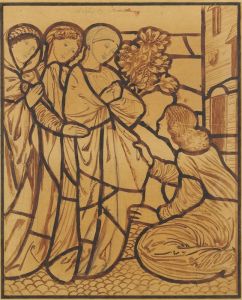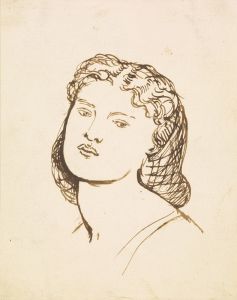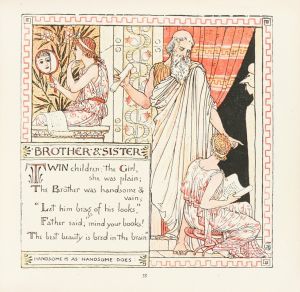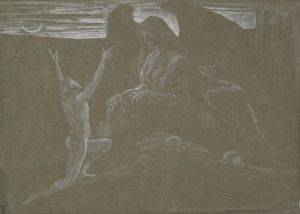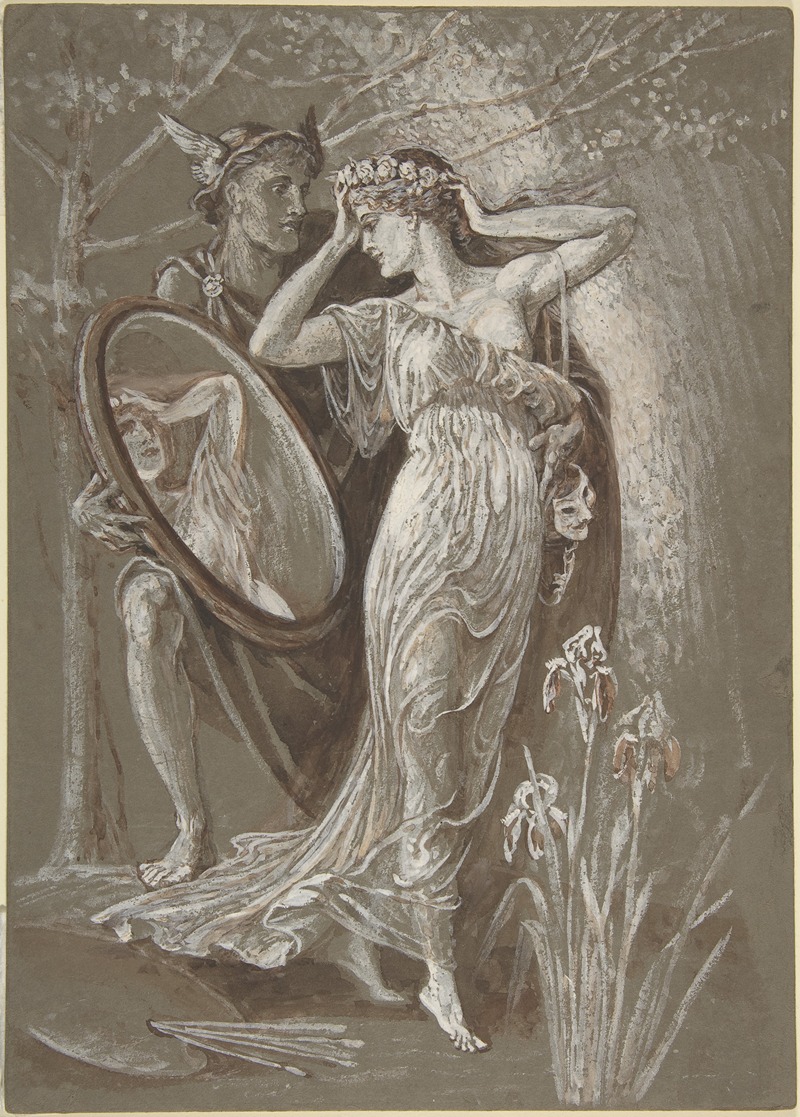
The Mirror of Venus, or L’Art et Vie
A hand-painted replica of Walter Crane’s masterpiece The Mirror of Venus, or L’Art et Vie, meticulously crafted by professional artists to capture the true essence of the original. Each piece is created with museum-quality canvas and rare mineral pigments, carefully painted by experienced artists with delicate brushstrokes and rich, layered colors to perfectly recreate the texture of the original artwork. Unlike machine-printed reproductions, this hand-painted version brings the painting to life, infused with the artist’s emotions and skill in every stroke. Whether for personal collection or home decoration, it instantly elevates the artistic atmosphere of any space.
"The Mirror of Venus, or L’Art et Vie" is a painting by the English artist Walter Crane, who was a prominent figure in the Arts and Crafts Movement. Crane was born on August 15, 1845, in Liverpool, England, and he became well-known for his illustrations, paintings, and designs. He was particularly influential in the late 19th and early 20th centuries.
Walter Crane's work often featured themes of mythology, literature, and allegory, and "The Mirror of Venus" is no exception. The painting depicts a group of women gathered around a reflective pool, gazing at their reflections in the water. This scene is inspired by the mythological story of Venus, the Roman goddess of love and beauty, who is often associated with mirrors and reflections. The title "The Mirror of Venus" suggests a connection to this mythological theme, emphasizing the beauty and contemplation of the figures in the painting.
Crane's style in this painting is characterized by his use of vibrant colors, intricate details, and a harmonious composition. The figures are elegantly posed, and the landscape around them is lush and idyllic, creating a sense of tranquility and timelessness. The reflective pool serves as a central element in the composition, drawing the viewer's eye to the mirrored images of the women and enhancing the overall aesthetic of the piece.
Walter Crane was not only a painter but also an accomplished illustrator and designer. He was deeply involved in the Arts and Crafts Movement, which sought to revive traditional craftsmanship and promote the decorative arts as a response to the industrialization of the 19th century. Crane's work often reflected the movement's ideals, emphasizing beauty, craftsmanship, and the integration of art into everyday life.
"The Mirror of Venus" exemplifies Crane's ability to blend classical themes with his own artistic vision. The painting's serene and contemplative atmosphere invites viewers to reflect on the nature of beauty and the passage of time. It also showcases Crane's skill in creating detailed and harmonious compositions that draw on both historical and mythological sources.
Walter Crane's contributions to art and design were significant, and his influence extended beyond his own time. He was a key figure in the development of children's book illustration, and his work in this field remains highly regarded. Additionally, Crane's designs for textiles, wallpapers, and other decorative arts helped to shape the aesthetic of the Arts and Crafts Movement.
In summary, "The Mirror of Venus, or L’Art et Vie" by Walter Crane is a painting that captures the essence of the artist's style and thematic interests. Through its depiction of mythological figures and its emphasis on beauty and reflection, the painting offers a glimpse into Crane's artistic vision and his contributions to the broader artistic movements of his time.






